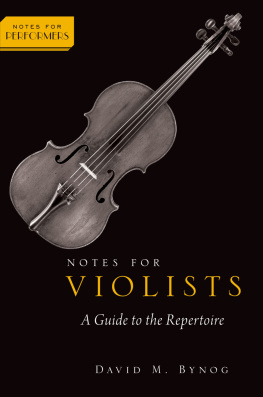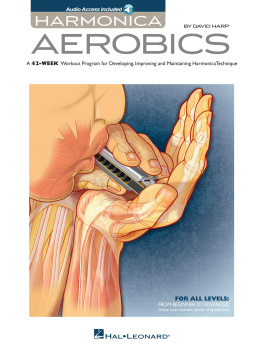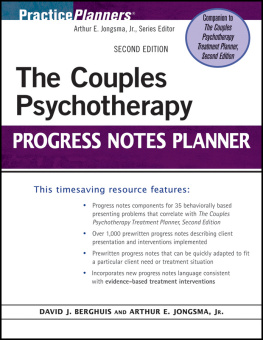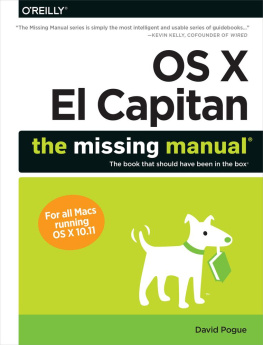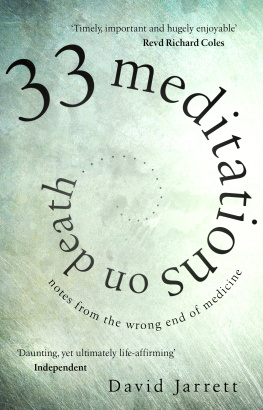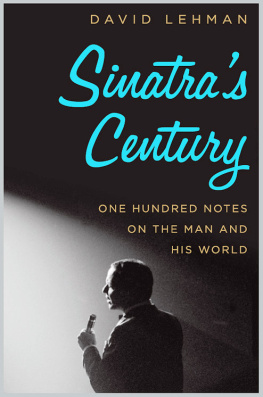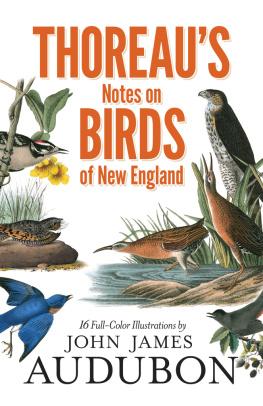Bynog David M. - Notes for Violists
Here you can read online Bynog David M. - Notes for Violists full text of the book (entire story) in english for free. Download pdf and epub, get meaning, cover and reviews about this ebook. year: 2021, publisher: Oxford University Press, Incorporated, genre: Detective and thriller. Description of the work, (preface) as well as reviews are available. Best literature library LitArk.com created for fans of good reading and offers a wide selection of genres:
Romance novel
Science fiction
Adventure
Detective
Science
History
Home and family
Prose
Art
Politics
Computer
Non-fiction
Religion
Business
Children
Humor
Choose a favorite category and find really read worthwhile books. Enjoy immersion in the world of imagination, feel the emotions of the characters or learn something new for yourself, make an fascinating discovery.
- Book:Notes for Violists
- Author:
- Publisher:Oxford University Press, Incorporated
- Genre:
- Year:2021
- Rating:3 / 5
- Favourites:Add to favourites
- Your mark:
- 60
- 1
- 2
- 3
- 4
- 5
Notes for Violists: summary, description and annotation
We offer to read an annotation, description, summary or preface (depends on what the author of the book "Notes for Violists" wrote himself). If you haven't found the necessary information about the book — write in the comments, we will try to find it.
Notes for Violists — read online for free the complete book (whole text) full work
Below is the text of the book, divided by pages. System saving the place of the last page read, allows you to conveniently read the book "Notes for Violists" online for free, without having to search again every time where you left off. Put a bookmark, and you can go to the page where you finished reading at any time.
Font size:
Interval:
Bookmark:

Kyle Dzapo, Series Editor
Notes for Flutists
Kyle Dzapo
Notes for Clarinetists
Albert R. Rice

Oxford University Press is a department of the University of Oxford. It furthers the Universitys objective of excellence in research, scholarship, and education by publishing worldwide. Oxford is a registered trade mark of Oxford University Press in the UK and certain other countries.
Published in the United States of America by Oxford University Press
198 Madison Avenue, New York, NY 10016, United States of America.
Oxford University Press 2021
All rights reserved. No part of this publication may be reproduced, stored in a retrieval system, or transmitted, in any form or by any means, without the prior permission in writing of Oxford University Press, or as expressly permitted by law, by license, or under terms agreed with the appropriate reproduction rights organization. Inquiries concerning reproduction outside the scope of the above should be sent to the Rights Department, Oxford University Press, at the address above.
You must not circulate this work in any other form and you must impose this same condition on any acquirer.
Library of Congress Cataloging-in-Publication Data
Names: Bynog, David M., author.
Title: Notes for violists : a guide to the repertoire / David M. Bynog.
Description: New York : Oxford University Press, 2020. |
Series: Notes for performers series | Includes bibliographical references and index. |
Identifiers: LCCN 2020024088 (print) | LCCN 2020024089 (ebook) |
ISBN 9780190916107 (hardback) | ISBN 9780190916114 (paperback) |
ISBN 9780190916138 (epub)
Subjects: LCSH: Viola musicHistory and criticism. |
Viola musicAnalysis, appreciation. | Concertos (Viola)History and criticism. |
Concertos (Viola)Analysis, appreciation. | Sonatas (Viola)History and criticism. |
Sonatas (Viola)Analysis, appreciation. | Viola and piano musicHistory and criticism. |
Viola and piano musicAnalysis, appreciation.
Classification: LCC ML905 .B96 2020 (print) | LCC ML905 (ebook) |
DDC 784.2/73186dc23
LC record available at https://lccn.loc.gov/2020024088
LC ebook record available at https://lccn.loc.gov/2020024089
For Paul, who endures
Notes for Performers is a series born of my desire to help musicians connect performance studies with pertinent aspects of scholarship. My favorite theory professor, John Buccheri (Northwestern University), used to say that to know a piece intuitively, technically, and intellectually is to really know a piece. While some may argue that one should simply play from the heart, knowledge can be a powerful tool in strengthening or refining a performers instincts. Additionally, when musicians are armed with knowledge, they can enhance their audiences understanding of compositions. Having served as a pre-concert lecturer for the Chicago Symphony Orchestra for more than twenty years, I have had the satisfaction of helping audiences engage more fully with the music they are about to hear. I hope this series will encourage performers to offer written or spoken commentary to enhance their audiences listening experiences.
While all musicians will gain insights from the books in the series, the writing is intended for undergraduate students, perhaps with a bit of professorial guidance. The selection of pieces is admittedly subjective. Each author is asked to identify the best-known compositions written for the instrument. It is my hope that instrumentalists will view each volume as a starting point for connecting performance studies with scholarship and that it will encourage them to explore other works in a similar fashion. Many more works are worthy of inclusion in each volume and, in time, perhaps second volumes may be added with additional compositions, including more recent works that have stood the test of time and become part of a given instruments core repertoire.
There have long been helpful resources available to performers for learning about chamber, orchestral, and operatic works, but similar in-depth information to guide ones understanding of a given orchestral instruments solo repertoire has thus far been noticeably absent from bookshelves. The goal of this series is to fill that open space on the shelf, and my goal as Oxford University Presss Notes for Performers editor is to contribute to the intellectual understanding necessary, as Dr. Buccheri would suggest, for a musician to really know a piece.
Kyle Dzapo
Professor of Music
Bradley University
Historically, the viola has been mistreated and misunderstoodthe proverbial middle child that is overshadowed by its more popular siblings, the violin and cello. Given its unique characteristics, the violas charms may not be readily apparent to the uninitiated. An acoustically imperfect instrument, the viola has no standardized size, resulting in a wide range of tonal qualities depending on the specific instrument. The violas music is principally written in alto clef, which has deterred many individuals from learning the instrument and perplexed musical colleagues as they have attempted to decipher the violas notes in a score. Yet for violists, the alto clef has become an emblem of pride, appropriately dubbed the viola clef. And among orchestral instruments, the viola is unusual in that most of its performers started by learning to play a different instrument: the violin.
As someone who, atypically, started out playing the viola, I have spent many years attempting to understand this fascinating instrument. Not only the instrument itself but all aspects related to it, including its history, repertoire, performers, and critical reception. This book is intended to help violists better understand thirty-five key pieces of the repertoire with the goal of enriching performances. In addition to basic biographical information about each composer, I have attempted to provide as much practical source information about the origins and development of each work as possible. Detailed analyses, a major component of each book in the Notes for Performers series, are also included. Analysis can take many forms, and while my approach has been fairly traditional, I have attempted to tailor my approach to the specific work being discussed. In many instances, I have provided references to alternate analyses (typically in a note). Select chapters also include a list of sources to consult. I consider the analysis of each work not as an end but rather as a beginning. Readers will likely find the analysis portion most useful if they follow along with the score, but numerous charts are also provided to assist even if access to a score is not readily available. The musical snippets in the charts serve as a guide to the specific thematic areas; for space reasons, many tutti snippets have not been included. In most instances, the snippet corresponds to the beginning of the thematic area, but in some instances a later snippet has been selected, typically the violas first significant entrance in that area.
In selecting the repertoire for this book, I first consulted several well-known sources: Representative List of Viola Repertoire, by Donald McInnes; The Viola: Complete Guide for Teachers and Students, by Henry Barrett; and Playing and Teaching the Viola: A Comprehensive Guide to the Central Clef and Its Music, edited by Gregory Barnes. I next visited the websites of many violists, reviewing their repertoire lists. From these sources, I generated a list of fifty works that I then narrowed down to the thirty-five that are included in this book. In making the final selections, I attempted to cover as broad a spectrum as possible regarding time periods, nationalities of the composers, and instrumental combinations (including works for viola alone, viola and piano, and viola and orchestra). Since the Notes for Performers series is largely designed for students, I included works that many high school, undergraduate, and graduate students at every level are likely to encounter. Other books in the series have selected only one work by each composer, but given the prominent place that Paul Hindemiths music has in a violists repertoire, I have selected two works by him: one sonata and one concerto.
Font size:
Interval:
Bookmark:
Similar books «Notes for Violists»
Look at similar books to Notes for Violists. We have selected literature similar in name and meaning in the hope of providing readers with more options to find new, interesting, not yet read works.
Discussion, reviews of the book Notes for Violists and just readers' own opinions. Leave your comments, write what you think about the work, its meaning or the main characters. Specify what exactly you liked and what you didn't like, and why you think so.

